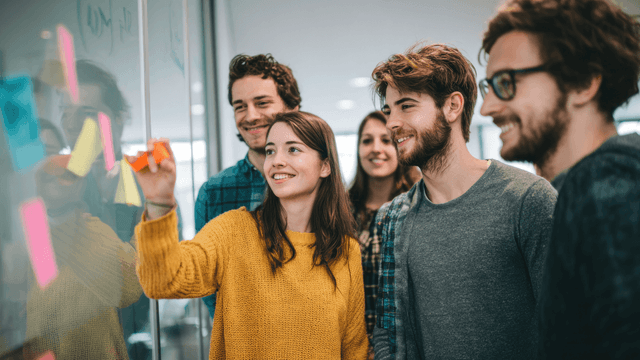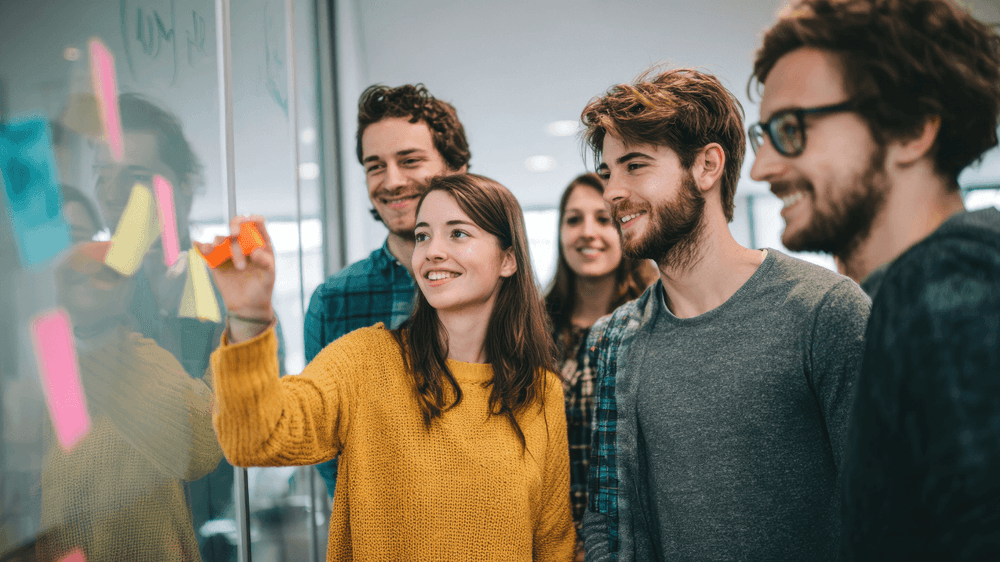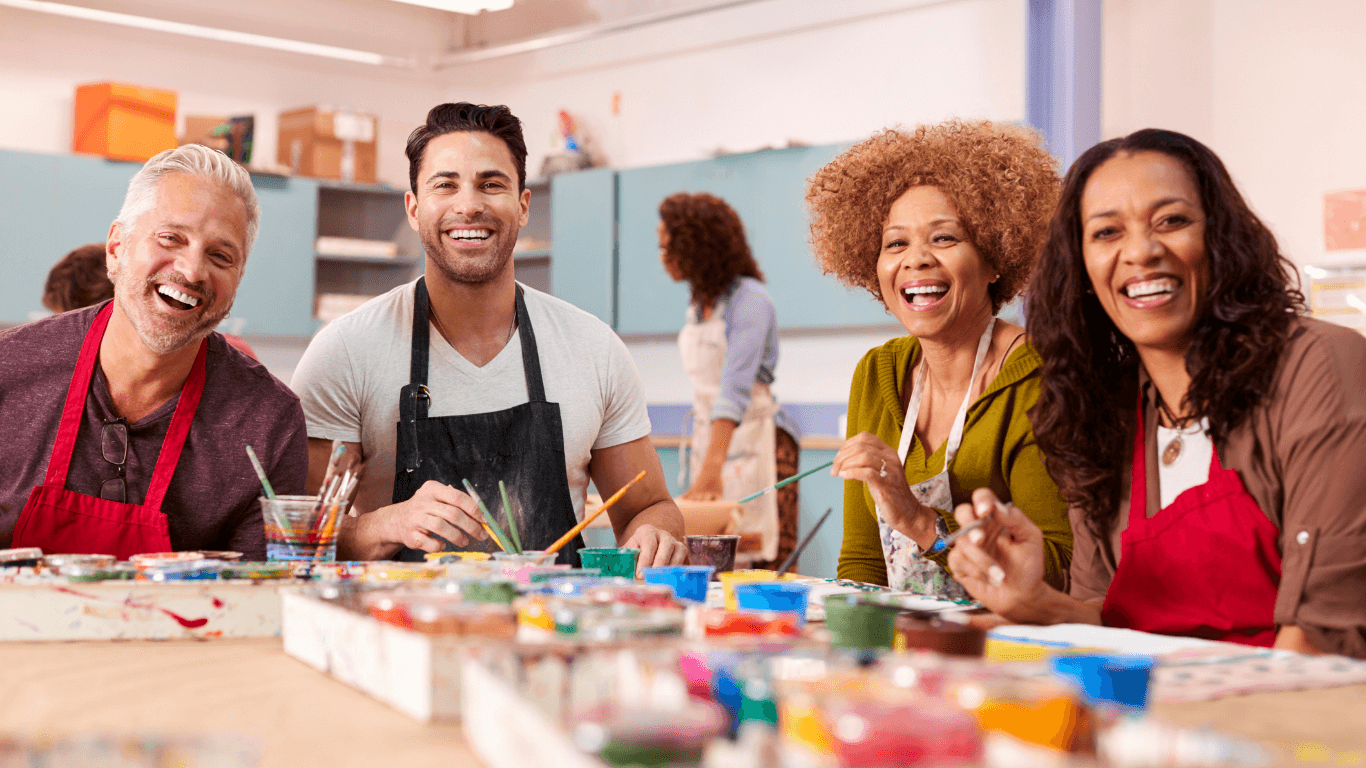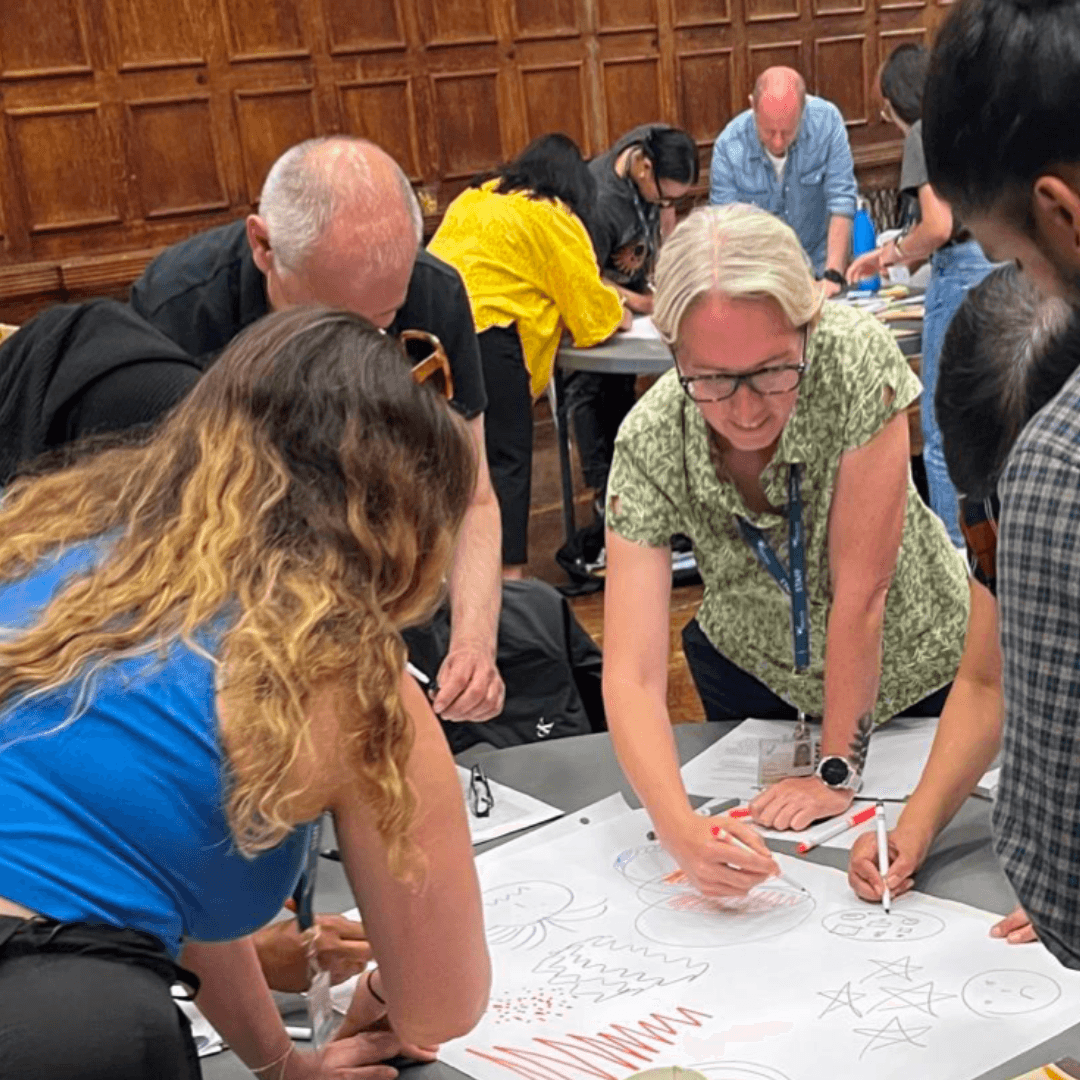BlogsHow Does Creativity Enhance Learning?
How Does Creativity Enhance Learning?


Share
How Does Creativity Enhance Learning?


Gone are the days where employees were subjected to “death by PowerPoint” – well, these types of one-dimensional training sessions aren’t exactly banished from existence, but they’re certainly on the decline. This is because teams are rightfully asking for more, particularly in the aftermath of the pandemic. It’s mind-blowing to think that the first lockdown was almost five years ago!
We’re looking to re-evolve away from the overuse of the Zoom call, and, whilst many of us greatly appreciate the perks of remote working, it ultimately comes with a price: a lack of in-person human contact. This has made the need for high quality training programmes an even bigger necessity, helping employees to reconnect and recalibrate as a unit.
As a business owner, but also as a theatre director, coach, wife, mother and friend, I am constantly surrounded by brilliant reminders of the joy found in human connection. Grown up working life is often crammed full of systems, processes, strategic plans and sensible thinking - which we need too of course! But we also need to allow time for the silly, the impromptu, the shared moments of joy in amongst the lists and spreadsheets. It is in these moments that we grow, discover, connect and laugh.
And that is precisely what Global Training injects into company training, in a myriad of creative ways. In today’s blog, we’re going to explore how creativity enhances learning and team building, with some real-world examples from the training I deliver.
What Do Psychologists Say?
Before we delve into the how, let’s explore the why. There is a wealth of psychological evidence which shows that creativity is directly linked to learning and overall mental wellbeing.
First, let’s deep-dive into the impact of creativity on wellbeing: happy employees equal a happy workplace, after all! For example, Chermahini and Hommel assigned university students to one of four different tasks with varying levels of creativity. Lo and behold, they found that the students who were given a ‘divergent thinking’ task reported the highest increase in mood. In another particularly poignant study, Puig et al. found that breast cancer patients who received creative arts therapy intervention reported a subsequent improvement in their psychological well being. These are two examples taken from a variety of studies that have been carried out over the years – most of which prove a similar hypothesis.
So, it’s clear that creative pursuits can enhance our mood and productivity. But how do we learn – and can creativity truly enhance these processes? Well, our brains are unique, and we all process and retain information in different ways. Neil Fleming was the first to famously split us into three cognitive categories: visual, auditory and kinaesthetic learners. For example, when revising for your exams, did you prefer a colour-coded mind-map, a Q & A with friends to test your knowledge, or a practical activity where you got truly stuck in? Your preference here can help define what type of learner you are.
Furthermore, adding an element of creativity to your learning process of choice has been proven to enhance your recall. Creative activities increase our levels of engagement, whilst also evoking emotion, and subsequently forging long-term associated memories. Why? Because creative thinking enriches memories with uniquely personal significance.
Learning also isn’t solely about memory recall. In 1979, Säljö carried out research to discover how people perceive learning: the answers ranged from a “quantitative increase in knowledge” and “memorising”, to “interpreting and understanding reality in a different way”. The latter demonstrates how learning is not only about memorising, but also experiencing and evolving. In particular, at work, everything you learn will shape your future encounters, successes and challenges.
Corporate vs. Creative: Finding a Balance
In industries such as business, finance and law, many will assume that the methodical trumps the creative. However, you’d be surprised to learn that creative thinking can be an asset to more corporate roles. For example, proposals require innovation, presentations demand confidence and charisma, problem-solving often stems from out-of-the-box thinking, and collaborating with your colleagues requires an open-minded, empathetic perspective. All of these skills and qualities can be enhanced through creative learning.
Despite this, I’m certainly not proposing that you take your employees from 0 to 100. It’s all about finding a balance: tailoring your training to your team and their roles – with a little creative flair when suits! And that’s where Global Training comes in.
When planning the activities for each bespoke training day, I often take inspiration from my own daily encounters and experiences in everyday life. One Saturday afternoon at 3pm, I found myself doing the Conga around a pub in North London alongside a group of relative strangers. It was totally ridiculous, unexpected and liberating. It was inspired by a particular song in round six of the music pub quiz that my friends and I had joined. In that moment, it felt truly wondrous to be linked, hands to shoulder, in a grand circle of people of all ages and backgrounds, united by a spontaneous moment of silliness.
Whether team-building activities inspire you to be physically or emotionally interlinked, the undercurrent of trust and security will allow team members to embrace the ‘silly’, the spontaneous and the un-self-conscious! This will provide the foundations needed for a productive, cooperative and coherent team dynamic – where everyone’s a winner.
Creative Learning in Team Training
Due to my background in theatre, I’ve always endeavoured to find ways to fuse my two worlds together: breathing creative life into corporate training programmes. Creative training can come in many forms; our recent Courageous Conversations training day at Alperton School, for example, involved splurging ideas on a literal art canvas! We invited tables of 10 teachers to pause speaking, pick up coloured pens and start artistically interpreting how conflict made them feel. Then we invited the groups to circulate the room and observe others’ responses. This was an abstract way of being able to think more laterally about the emotional domain of conflict and the human impact.
At Kerem school, I split 30 staff into groups of 5 and they competed to create the tallest, most self-supporting structure out of marshmallows, spaghetti (uncooked!) and sellotape. This was a team challenge which enabled them to have insight into their own role within a group, and catalysed some excellent conversation about their contribution in a team.

Earlier in the year, I worked with the sizable team at Anderson Rose. They collaborated in an array of creative challenges which certainly pushed them out of their comfort zone! Read more about their team building escapades here!
Get In Touch with Global!
Do you think that your team’s learning could be enhanced by creativity? Do you feel that your colleagues need a reset at the start of the new year? We would love to design a bespoke training programme for your company. Tell us which challenges your team faces at work, and what areas of potential improvement you can identify – from communication to collaboration, to navigating a return to the hybrid work model.
Get in touch today, and you’ll be one step closer to reaping the benefits of a creativity-fuelled team!
Share this post